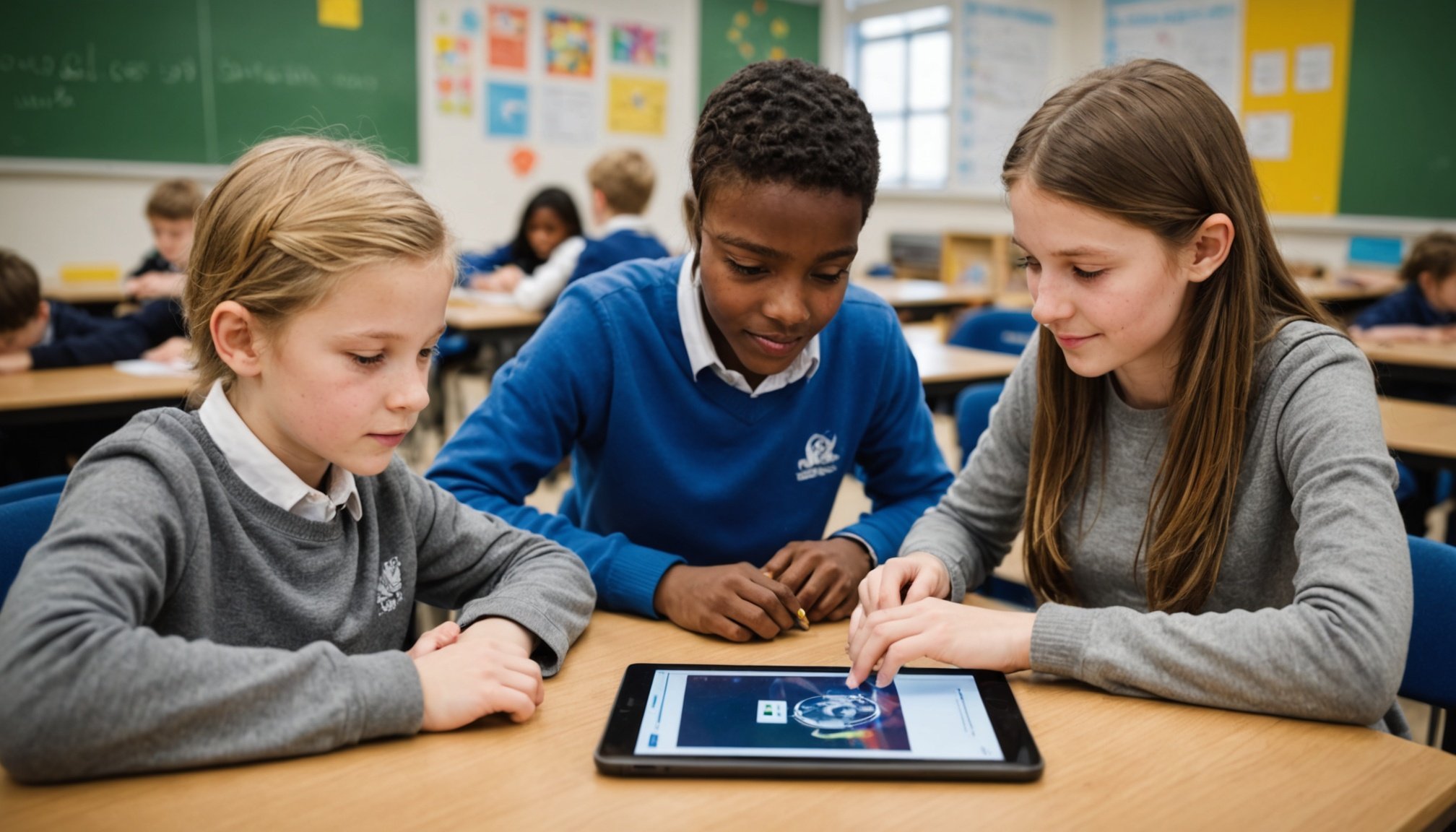Innovative Teaching Practices for Digital Skills Development
In this rapidly evolving tech environment, innovative teaching practices are crucial for enhancing digital skills among learners. Incorporating diverse and creative methodologies ensures students not only grasp theoretical concepts but also gain practical experiences. One such approach is hands-on project-based learning, where students engage in real-world projects that require them to apply digital skills collaboratively. This method encourages problem-solving and critical thinking, as learners encounter challenges that reflect actual technological tasks.
Another effective technique involves integrating gamification into educational technology. By using game-like elements in learning, educators can increase student engagement and motivation. Techniques such as scoring systems, leaderboards, and digital badges inspire healthy competition and perseverance, driving students to attain desired competencies in digital skills.
Also to read : Transforming quality assurance: cutting-edge ai solutions for breweries in the uk
Educational technology also plays a pivotal role in this process. By leveraging tools like virtual simulations and coding platforms, teachers can provide dynamic and interactive learning experiences. These technologies cater to diverse learning styles and make complex digital concepts more accessible and understandable. Consequently, students experience a transformed learning environment that not only educates but also prepares them for the digital demands of the future workplace.
Successful Case Studies in UK Schools
The integration of technology has led to significant advancements in tech literacy among students. Below are prominent case studies that highlight this success.
Also to read : Unlocking tomorrow: how uk tourism boards are harnessing virtual reality to transform destination marketing
Primary School Initiatives
In several primary schools, the introduction of tech-focused curricula has revolutionised learning. These initiatives often involve interactive software and coding courses designed to engage young minds. For instance, one program emphasized tablet-based learning with notable improvements in literacy and numeracy. By adapting to students’ learning speeds, these tools fostered a more personalised educational experience.
Secondary School Programs
Secondary schools have implemented more advanced tech literacy programs. These programs incorporate computer science classes and robotics clubs, attracting substantial interest. A particular success story involves a school that formed a coding team, which not only competed nationally but also won awards. This has significantly boosted students’ confidence in their technical skills.
Community Partnerships
Community involvement has proven indispensable. Several schools have partnered with local tech firms to enhance student learning experiences. These partnerships enrich programs through mentorships and access to cutting-edge technology. Feedback from educators points to heightened enthusiasm and innovative thinking among students. Such collaboration has a marked impact, making tech education more comprehensive and practical.
Practical Tools and Resources for Educators
In the ever-evolving landscape of education technology, educators are increasingly incorporating digital tools to enhance teaching and learning. Some of the most recommended educational tools include Google Classroom, Kahoot!, and Nearpod, which facilitate interactive learning. Moreover, educational platforms like Coursera and Udemy offer diverse online courses that support continuing professional development. These courses enable teachers to refine their skills and stay abreast of technological advancements in education.
Resources such as webinars and workshops provide practical insights into integrating technology into the classroom. These programs often cover topics like digital literacy and classroom management using tech tools, empowering educators to adopt innovative teaching methods.
Additionally, the importance of continuing professional development cannot be overstated in today’s tech-driven environment. Engaging in professional development courses allows educators to gain confidence in using new technologies and remain competitive in their field. Teachers who embrace technology in education can offer students enriched learning experiences, fostering an environment of curiosity and engagement.
By investing time in learning and applying new technologies, educators not only enhance their own skills but also contribute significantly to the technology in education transformation, subsequently benefiting students and schools alike.
Addressing Challenges in Integrating Technology
Integrating technology into education presents challenges that need careful handling. One major barrier is the lack of training for educators. Many teachers may not have the necessary skills to incorporate new tech into the classroom effectively. This hurdle can be overcome by providing comprehensive professional development programs. Such programs allow educators to become familiar with and confident in using new tools.
Another common issue is the resistance to change from established teaching methods. Overcoming this requires promoting the benefits of technology, like enhanced learning experiences and personalized education. Encouraging teachers to experiment with technology, in a supportive environment, can increase acceptance and highlight its practical benefits.
Financial constraints also play a crucial role. Often, funding for technology integration in schools is limited. Therefore, identifying alternative funding opportunities is essential. Schools can explore grants, partnerships with technology companies, or community fundraising efforts to acquire the necessary resources. Support from administration and local government can facilitate this process, ensuring schools have the means to adopt technology.
In summary, by addressing these challenges—training, resistance, and funding—technology integration can be successfully achieved, benefitting students and educators alike.
Real-world Applications of Digital Skills
Understanding the real-world applications of digital skills is crucial for students today. It empowers them to transcend traditional schooling and apply tech literacy to real-life situations. For instance, students often leverage digital skills to tackle community issues. In one case, a group of students used coding to create an app that helps locate lost pets, demonstrating the power of technology to solve pressing problems.
Such applications aren’t restricted to hypothetical scenarios; they lay the groundwork for active problem-solving, promoting an entrepreneurial mindset. How does this translate to empowerment? By allowing students to envision and execute their own projects, they develop confidence and a sense of agency.
Moreover, student empowerment through digital skills fosters a culture of innovation and self-starting attitudes. When students understand how digital skills relate to their worlds, they are more inclined to engage deeply and creatively. Cultivating an entrepreneurial mindset in students is not just about teaching them to code or navigate software—it’s about encouraging them to see technology as a tool they can wield to make meaningful contributions to society.






